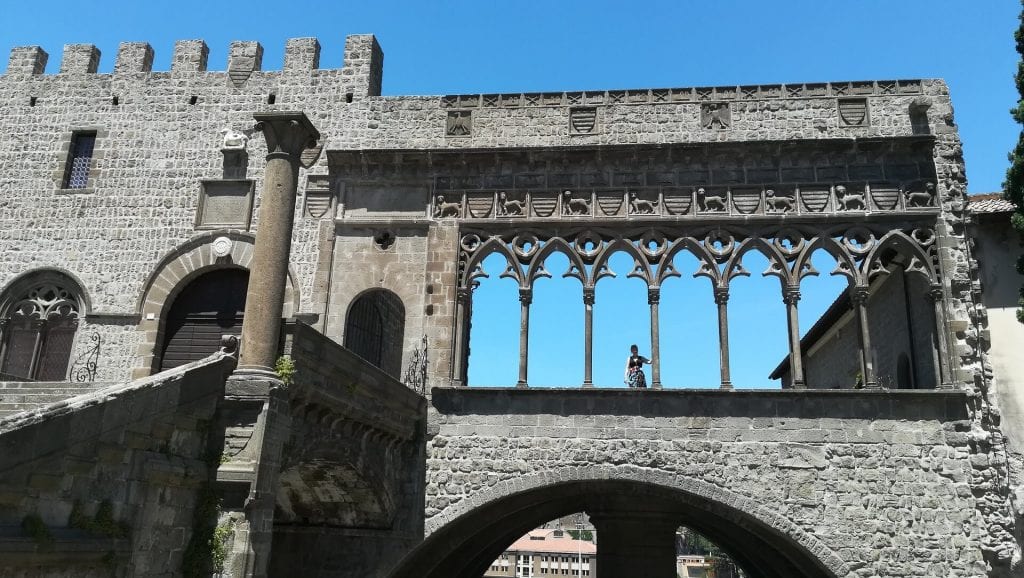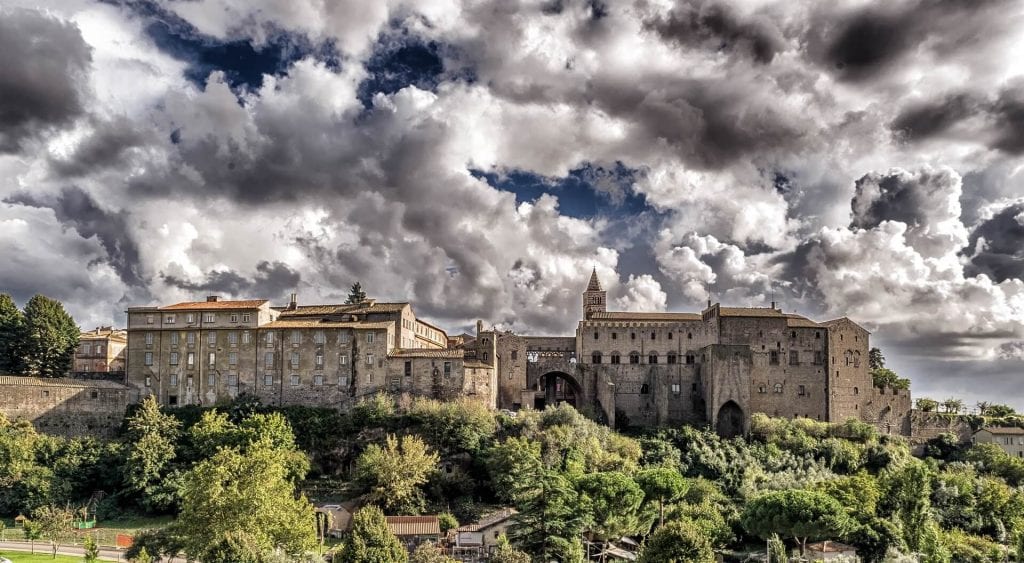Viterbo‘s historic center is one of the best preserved medieval towns of central Italy. Many of the older buildings (particularly churches) are built on top of ancient ruins, recognizable by their large stones, 50 centimeters to a side.
Viterbo is unique in Italy for its concentration of ‘profferli‘, external staircases that were a frequent feature of medieval houses.

The Papal Palace is one of the most important monuments of Viterbo; the palace hosted the papacy for about two decades in the 13th century, and served as a country residence or refuge in time of trouble in Rome.
The columns of the palace are spolia of a Roman temple.
Viterbo remained the papal seat for twenty-four years, from 1257 to 1281.
Viterbo Cathedral is a Roman Catholic cathedral, and the principal church of the city of Viterbo, Lazio, central Italy. It is the seat of the Bishop of Viterbo and is dedicated to Saint Lawrence.
The church is an imposing Romanesque structure situated high on the hill but it lacks much of the spectacular decoration with which it was originally adorned, thanks to an ill-advised sixteenth-century reconstruction.
According to legend, the cathedral was built on the site of an Etruscan temple of Hercules. Etruscan and Roman foundations can be seen on several of the buildings facing the Piazza di San Lorenzo where the cathedral is situated. Before the 12th century, a parish church dedicated to Saint Lawrence had occupied the site of the cathedral.

The Papal Palace of Viterbo, with the bell tower of the cathedral in the background 


